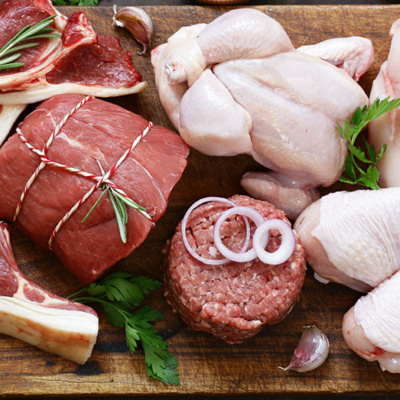top of mind news
- How Youth Sports Sponsorships Can Pay Off for Local Restaurants
- Restaurants Giving Back
- Where Does the Restaurant Industry Go from Here?
- Where Safety Meets Satisfaction — Tips For COVID-Era Restaurateurs to Elevate Their Customer Offerings
- 3 Foolproof Tips to Instantly Improve Your Smartphone Food Photography
Poultry
 Weekly chicken slaughter for the week ending March 27th faded from the week prior and fell 2.1% below year ago levels. Last year at this time, the market was on the front end of the COVID slowdowns, so year-over-year slaughter comparisons are likely to show record levels into April. Still, despite broiler production running at or near record levels, wholesale prices continue to firm as interest, both domestic and international remains robust. Seasonally, prices across the chicken breast and tender markets should remain supported going into the summer grilling season but the wing markets should begin to fade. But wing prices will likely remain high for now before that seasonal weakness.
Weekly chicken slaughter for the week ending March 27th faded from the week prior and fell 2.1% below year ago levels. Last year at this time, the market was on the front end of the COVID slowdowns, so year-over-year slaughter comparisons are likely to show record levels into April. Still, despite broiler production running at or near record levels, wholesale prices continue to firm as interest, both domestic and international remains robust. Seasonally, prices across the chicken breast and tender markets should remain supported going into the summer grilling season but the wing markets should begin to fade. But wing prices will likely remain high for now before that seasonal weakness.
Beef
Last week’s cattle harvest fell sharply due to the holiday shortened weekend, with the initial estimate coming in at 609k head. Last week’s USDA beef cutouts were well supported, and the smaller kills heading into April will likely underpin beef prices (at least a bit) into mid-month. The middle meats continue to drive the bulk of the beef cutout increases, with all styles of ribs, as well as the PSMO tenderloins and strips and short loins also contributing. Beef 50’s prices, as well, have started to head higher, and, despite remaining well below seasonal expectations, the price risk remains to the upside into the early summer.
Pork
Last week’s pork production schedules fell off into the holiday weekend, with the industry moving a modest 536.9 million pounds of pork throughout the week. The USDA pork cutout remains well supported on lackluster slaughter and aggressive demand from both the domestic and international marketplaces. The pork bellies, as well as the pork 42s remain stubbornly inflated and may remain so heading deeper into the spring. Still, anticipate a break back below the $1.00 per lb. mark on the 42s fat trim, but belly prices are likely to remain strong.
THE SEA
Seafood
World snow crab supplies remain limited, and prices are inflated. The 2021 total allowable catch for the Newfoundland Labrador region was announced last week at 38.2 thousand metric tons. This is 29% bigger than the previous year and a multi-year high. This should help the world snow crab supply modestly however improving foodservice demand could temper any notable price relief.
THE GARDEN
Produce
The potato markets are firming as stocks seasonally decline and demand slowly improves. The Idaho russet potato supply could continue to tighten during the next several months. This factor and the expected improvement for foodservice demand should generally be supportive of the potato markets deep into the summer. Lettuce supplies generally remain adequate despite the chief harvest area transition occurring. History suggests that the lettuce markets could be somewhat erratic during the spring as the principal harvest area switches again.
THE KITCHEN SINK
Dairy
Last week spot butter prices were up (w/w) and the highest in 10 months. U.S. butter production in February was down 1.3% (y/y) and was 11.4% smaller (m/m). Last week spot cheese block and barrel prices finished the highest in ten business days. Domestic cheese output in February was up 1.1% (y/y) but down 8.1% (m/m). Despite a usual lower seasonal trend for the cheese and butter markets in April, this year counter seasonal strength is occurring as food service activity increases and retail demand remains strong. Cheese and butter prices look ready to continue upward at least in the near term.
Grains
Last week, the USDA released their first farmer surveyed 2021 acreage numbers for U.S. corn, soybeans and wheat with both the corn and soybean plantings coming in below expectations. When these new acreage numbers are factored, it points to very tight feed supplies into 2022. This should be supportive of grain prices in the near term.
Oil
Retail diesel fuel prices last week finished slightly lower (w/w) but are still at levels not seen since December ‘18. Improving travel activity along with big truck deliveries occurring is boosting diesel fuel demand. Diesel fuel prices will remain firm.













